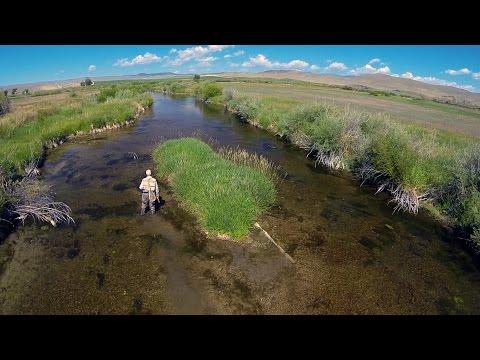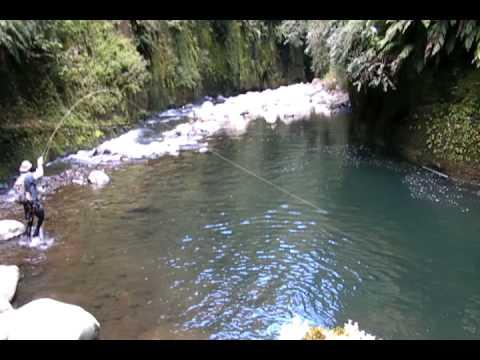The British dogger was an early type of sailing trawler from the 17th century, but the modern fishing trawler was developed in the 19th century, at the English fishing port of Brixham. By the early 19th century, the fishermen at Brixham needed to expand their fishing area further than ever before due to the ongoing depletion of stocks that was occurring in the overfished waters of South Devon. The Brixham trawler that evolved there was of a sleek build and had a tall gaff rig, which gave the vessel sufficient speed to make long distance trips out to the fishing grounds in the ocean. They were also sufficiently robust to be able to tow large trawls in deep water. The great trawling fleet that built up at Brixham, earned the village the title of 'Mother of Deep-Sea Fisheries'.[7]
Painting of A Brixham trawler by William Adolphus Knell. The painting is now in the National Maritime Museum.
This revolutionary design made large scale trawling in the ocean possible for the first time, resulting in a massive migration of fishermen from the ports in the South of England, to villages further north, such as Scarborough, Hull, Grimsby, Harwich and Yarmouth, that were points of access to the large fishing grounds in the Atlantic Ocean.[7]
The small village of Grimsby grew to become the largest fishing port in the world[8] by the mid 19th century. An Act of Parliament was first obtained in 1796, which authorised the construction of new quays and dredging of the Haven to make it deeper.[9] It was only in the 1846, with the tremendous expansion in the fishing industry, that the Grimsby Dock Company was formed. The foundation stone for the Royal Dock was laid by Albert the Prince consort in 1849. The dock covered 25 acres (10 ha) and was formally opened by Queen Victoria in 1854 as the first modern fishing port.
The elegant Brixham trawler spread across the world, influencing fishing fleets everywhere.[10] By the end of the 19th century, there were over 3,000 fishing trawlers in commission in Britain, with almost 1,000 at Grimsby. These trawlers were sold to fishermen around Europe, including from the Netherlands and Scandinavia. Twelve trawlers went on to form the nucleus of the German fishing fleet.
漁の歴史的起源は古く、捕獲の対象となる生物の生態にあわせて、また、時代の技術的制約のもとで、さまざまな漁具や漁法が用いられてきた。
伝統的な漁では、漁具の材料に在来のものが多く、その生産性は低かったが、漁の規模と水産資源の生態が調和し、水域の水産資源は再生産されていた。
漁の規模が大きくなると、数人で共同して漁をおこなったり、とくに近世以降は、網主が大人数を雇って漁をおこなうような例(地引き網や敷き網など)もあらわれた。
漁船の動力化や合成繊維網の普及などによる生産性の向上、急速な人口増加、漁場の広域化などの諸因により、水産資源の枯渇化という懸念が生じている。 そのため、漁は場所や漁具、捕獲対象によって法令で規制されている事が多い。例えば、免許を持たない者がヤスで刺突漁を行うのは問題ないが、同じことを水中メガネを付けて行うと漁業権を侵害したことになる[1]。
Painting of A Brixham trawler by William Adolphus Knell. The painting is now in the National Maritime Museum.
This revolutionary design made large scale trawling in the ocean possible for the first time, resulting in a massive migration of fishermen from the ports in the South of England, to villages further north, such as Scarborough, Hull, Grimsby, Harwich and Yarmouth, that were points of access to the large fishing grounds in the Atlantic Ocean.[7]
The small village of Grimsby grew to become the largest fishing port in the world[8] by the mid 19th century. An Act of Parliament was first obtained in 1796, which authorised the construction of new quays and dredging of the Haven to make it deeper.[9] It was only in the 1846, with the tremendous expansion in the fishing industry, that the Grimsby Dock Company was formed. The foundation stone for the Royal Dock was laid by Albert the Prince consort in 1849. The dock covered 25 acres (10 ha) and was formally opened by Queen Victoria in 1854 as the first modern fishing port.
The elegant Brixham trawler spread across the world, influencing fishing fleets everywhere.[10] By the end of the 19th century, there were over 3,000 fishing trawlers in commission in Britain, with almost 1,000 at Grimsby. These trawlers were sold to fishermen around Europe, including from the Netherlands and Scandinavia. Twelve trawlers went on to form the nucleus of the German fishing fleet.
漁の歴史的起源は古く、捕獲の対象となる生物の生態にあわせて、また、時代の技術的制約のもとで、さまざまな漁具や漁法が用いられてきた。
伝統的な漁では、漁具の材料に在来のものが多く、その生産性は低かったが、漁の規模と水産資源の生態が調和し、水域の水産資源は再生産されていた。
漁の規模が大きくなると、数人で共同して漁をおこなったり、とくに近世以降は、網主が大人数を雇って漁をおこなうような例(地引き網や敷き網など)もあらわれた。
漁船の動力化や合成繊維網の普及などによる生産性の向上、急速な人口増加、漁場の広域化などの諸因により、水産資源の枯渇化という懸念が生じている。 そのため、漁は場所や漁具、捕獲対象によって法令で規制されている事が多い。例えば、免許を持たない者がヤスで刺突漁を行うのは問題ないが、同じことを水中メガネを付けて行うと漁業権を侵害したことになる[1]。
- Category
- Fly Fishing




